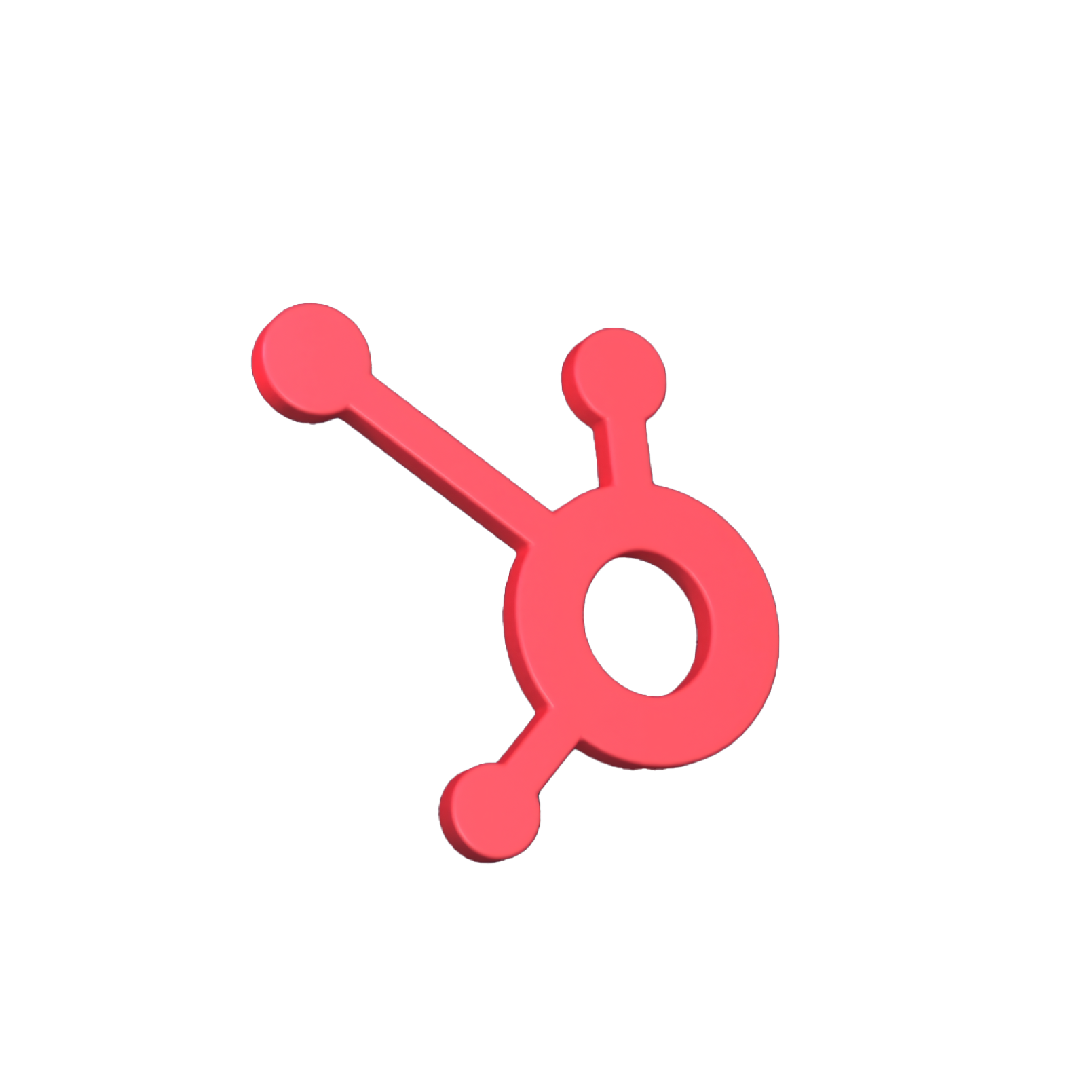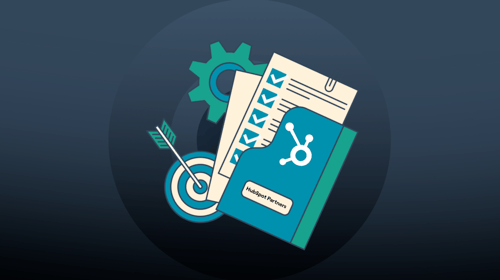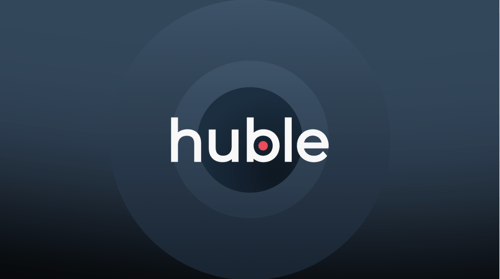In this article, we'll explore whether HubSpot can replace Breeze Demandbase for ABM and help you decide which tool best suits your business needs. We look at the strengths and differences between the two tools and explain when you should use them for maximum impact.
First things first, both tools can be used for Account-Based Marketing (ABM), which focuses on targeting high-value accounts with personalized marketing efforts, setting it apart from traditional, broad lead-generation strategies.
Over recent years, we’ve seen a shift in the way that people buy. Today’s B2B buyers are less likely to fill out forms or engage with sales teams directly, preferring to conduct research in the background. This shift in the buyer journey has led to the rise of intent-based tools that help businesses track when accounts are actively researching solutions, without being able to identify that actual individual doing the research
In fact, more than 25% of businesses now use buyer intent data to deliver ads and campaigns to companies with high engagement potential.
Whilst there are lots of tools that provide buyer intent (e.g. Bombora, ZoomInfo etc), there are specific tools like Demandbase, HubSpot Breeze, 6sense and Rollworks that provide buyer intent data and provide the power to run ABM campaigns off it.
In this article, we’ll specifically compare HubSpot Breeze and Demandbase.
Why those two? Well Demandbase is a legacy leader in the ABM buyer intent world, and at Huble, we’ve seen a few companies recently look at whether they can replace Demandbase with HubSpot’s relatively new Breeze Intelligence platform.
Understanding Intent Data in ABM
Intent data has become a cornerstone of modern ABM strategies, allowing businesses to identify which companies are actively researching their solutions.
At its core, intent data helps sales and marketing teams focus their efforts on accounts that are showing real buying interest, rather than relying on outdated methods like form fills or cold outreach. By analyzing digital signals, businesses can prioritize outreach, personalize messaging, and engage prospects at the right time in their buyer journey.
There are two primary types of intent data: on-page intent and wider intent.
- On-page intent refers to visitors who land on your website, engage with content, and exhibit behaviors that indicate interest.
- Wider intent, on the other hand, goes beyond your own website and looks at signals from across the internet, tracking research activity on industry blogs, comparison sites, and third-party platforms.
This difference is crucial because it determines how businesses can leverage intent data in their ABM strategy.
On-page intent tools like HubSpot Breeze provide valuable insights into who is engaging with your brand directly, making it easier to nurture warm leads. However, they lack visibility into broader industry research trends, meaning they can’t capture intent signals from prospects who haven’t yet visited your site.
Wider intent tools like Demandbase track intent at a larger scale, identifying companies that are in-market before they even land on your website, allowing for proactive outreach.
This brings us to the central question: Can HubSpot Breeze replace Demandbase?
While Breeze Intelligence is a promising new tool within HubSpot, it is still relatively new and serves a different purpose. Before making a decision, it’s important to examine how Demandbase functions and how it compares to Breeze.
Demandbase: advanced ABM and intent data
Demandbase is a leading ABM platform that integrates with HubSpot, providing businesses with powerful tools to identify, target, and engage high-value accounts.
It offers an all-in-one solution designed for large-scale ABM campaigns, with capabilities that help businesses identify in-market accounts and run multi-channel campaigns.
Key intent data features of Demandbase
At its core, Demandbase uses intent data to identify which accounts are actively researching your products or services. It tracks online behavior across millions of web pages to provide a comprehensive view of a prospect's research activity, analyzing signals such as:
- Content consumption
- Search behavior
- Interactions with relevant industry topics
Once an in-market account is identified, businesses can:
- Run targeted ads
- Craft personalized messaging
- Tailor content to nurture these high-value prospects down the sales funnel
What makes Demandbase particularly powerful is its multi-channel approach. Not only does it track website activity, but it also integrates with advertising platforms, email marketing tools, and other communication channels, ensuring businesses can reach accounts wherever they are in their buyer journey.
Demandbase is an ideal solution for businesses with advanced ABM needs, such as:
- Complex targeting
- Large account lists
- Sophisticated segmentation
Its ability to track intent across multiple channels and use AI to predict account behavior provides highly accurate and actionable insights for sales and marketing teams.
When to choose Demandbase
Demandbase is best for large-scale ABM campaigns targeting hundreds or thousands of accounts. With its advanced segmentation and multi-channel capabilities, it’s well-suited for businesses looking for a comprehensive ABM solution.
However, the platform's complexity and learning curve might be more than necessary for businesses just starting with ABM or those with simpler needs.
As we explore how intent data tools compare, it's important to consider whether HubSpot Breeze, a more recent player, can serve as an alternative to Demandbase for tracking and leveraging buyer intent.
HubSpot Breeze: buyer intent insights within HubSpot CRM
Recognising the critical role of intent data, HubSpot acquired Clearbit in November 2023 and launched Breeze Intelligence in September 2024.
While both Breeze AI and Breeze Intelligence are part of HubSpot's AI suite, they serve different functions. Breeze AI includes tools like Breeze Copilot and Breeze Agents, which automate tasks and workflows.
Breeze Intelligence is focused on identifying buyer intent by leveraging external data to provide insights into contacts and companies within HubSpot's CRM.
Key features of HubSpot Breeze Intelligence
Breeze Intelligence helps businesses track and identify potential buyers by analyzing visitors' on-site behaviors, such as:
- Visiting product pages, downloading content, or spending time on high-value pages
- Real-time identification of buyer intent signals
- Built into HubSpot CRM, enabling data enrichment and personalized workflows directly within the platform
When to choose Breeze Intelligence
Breeze Intelligence is ideal for businesses starting their journey with intent data. It's especially effective for tracking website visitor behavior and using that data to trigger personalized workflows and marketing automation.
However, it’s important to note that Breeze Intelligence is limited to website visitor data, so it may not capture broader intent signals from other digital touchpoints, unlike platforms like Demandbase, which offer a more comprehensive solution for tracking intent across multiple channels.
Core differences between HubSpot Breeze and Demandbase
When evaluating HubSpot Breeze and Demandbase, the key distinction lies in how they track intent data:
- Demandbase tracks wider search intent across the web, identifying in-market accounts before they visit your website.
- HubSpot Breeze focuses on on-site visitor intent, helping businesses understand who is engaging with their website and what content they are consuming.
Beyond this core difference, the two tools also differ in terms of target audience, feature set, and scalability.
1. Target audience
Demandbase is designed for mid-market to enterprise businesses with complex ABM needs. It caters to businesses that are running large-scale ABM campaigns and need the ability to track intent across multiple channels. This makes it ideal for companies that have a broad list of target accounts, require advanced segmentation, and need to execute multi-channel campaigns at scale.
On the other hand, HubSpot Breeze is designed for companies in the early stages of their ABM journey. With a focus on website visitor intent, it offers a straightforward solution for businesses looking to track intent on their own website and begin using this data to inform their marketing and sales strategies. Breeze provides a streamlined approach without the complexity of larger platforms, making it a great fit for teams looking to get started with ABM efficiently.
2. Key features and functionalities
Demandbase is an all-in-one platform with advanced targeting features. It provides a comprehensive set of tools to identify in-market accounts, segment prospects, and deliver personalized messaging across multiple channels, ads, email, content, and more. The platform excels in its ability to track intent across millions of web pages, giving it a far broader scope than HubSpot Breeze.
With Demandbase, you can target accounts before they visit your website, track their activity across the internet, and leverage this data to run complex, multi-channel ABM campaigns.
HubSpot Breeze, in contrast, is focused on tracking website visitor intent. While it offers valuable insights into who is engaging with your site and what content they’re consuming, it doesn’t provide the same level of detail or scale as Demandbase. Breeze is integrated with HubSpot’s CRM, making it easy for businesses already using HubSpot to leverage intent data in a straightforward way.
However, it’s limited to on-site intent signals, meaning it can’t capture research activity happening off your website.
3. Scalability and complexity
Demandbase is highly scalable, but this scalability comes with added complexity.
The platform is designed for large-scale, multi-channel ABM campaigns, which means it requires a higher level of expertise to fully leverage its capabilities. It’s ideal for businesses with sophisticated ABM strategies and larger marketing teams that can dedicate resources to managing and optimizing the platform.
In contrast, HubSpot Breeze is simple to implement and use. It’s an intuitive tool that doesn’t require a steep learning curve, making it accessible for those just getting started with ABM.
However, this simplicity means it lacks some of the advanced features that make Demandbase so powerful for large enterprises. Breeze is easier to adopt, but its capabilities are not as extensive as Demandbase’s.
4. Use case recommendations
When considering whether to use Demandbase or HubSpot Breeze, the decision often boils down to the complexity of your ABM efforts.
- When to use Demandbase: If you’re running large-scale ABM campaigns with advanced targeting and segmentation needs, Demandbase is the better choice. It’s especially useful for businesses that need to track intent across the broader web, identify in-market accounts before they visit your site, and engage prospects via multiple channels.
- When to use Breeze: HubSpot Breeze is ideal for businesses just beginning their ABM efforts or those who want to start with a more accessible tool. If you’re focused on tracking intent on your website and aligning your sales and marketing efforts through HubSpot, Breeze is a great starting point. It’s easy to implement and offers valuable insights into on-site visitor intent, which can be used to engage prospects more effectively.
So, should I move from Demandbase to HubSpot Breeze?
The short answer is no– at least not if you’re used to being able to track intent data outside of your own website.
When it comes to comprehensive ABM platforms, Demandbase remains the better choice for large-scale, complex campaigns that require advanced targeting and multi-channel capabilities.
It provides a broader view of buyer intent by tracking behavior across the entire web, not just on your website, making it ideal for businesses that need to engage with in-market accounts before they land on your site. Demandbase also excels in segmentation, personalization, and running complex multi-channel campaigns, which are crucial for large enterprises with diverse customer bases.
However, if you're new to ABM and intent data, HubSpot Breeze is a great starting point. It is simpler to use, built into HubSpot’s CRM, and focuses on on-site intent data, which is a valuable insight for businesses that are just beginning to explore ABM or have a more limited set of target accounts. Breeze provides actionable insights on website visitors, helping businesses understand who is interested in their content and products without the complexity of larger ABM platforms.
It’s not a replacement for Demandbase, but it is a practical entry point for those who are getting started and want to scale their ABM efforts over time.
HubSpot Breeze vs Demandbase: why not both?
While HubSpot Breeze and Demandbase are distinct tools with different strengths, they don’t have to be mutually exclusive. In fact, many businesses can benefit from using both at different stages of their ABM journey.
You could start by using Breeze to gather insights into website visitor intent and nurture early-stage prospects. As your ABM efforts mature and you require more sophisticated targeting and multi-channel capabilities, you can then move to Demandbase to expand your reach and capture intent signals across the broader web.
By starting with Breeze and transitioning to Demandbase as your needs evolve, you create a scalable strategy that grows with your business. Both tools can complement each other, allowing you to build a robust ABM strategy from the ground up.
Our role as a HubSpot and Demandbase Partner
As a HubSpot and Demandbase partner, we specialize in helping businesses navigate their ABM journey.
Whether you’re just starting with HubSpot Breeze or looking to scale with Demandbase, we provide expert consulting to ensure you're using the right tools at the right time.
We can help you implement HubSpot Breeze to capture on-site intent data and transition to Demandbase when your business requires more advanced intent insights and multi-channel campaigns.
Find the right ABM tool for your business with Huble
When it comes to choosing the right ABM platform, the key is assessing your business needs.
Here are some important questions to consider:
- Scale of your efforts: Are you targeting a handful of high-value accounts or running large-scale campaigns across hundreds or thousands of accounts?
- Complexity: Do you need advanced segmentation and multi-channel capabilities, or are you focused primarily on on-site intent data and a simpler setup?
- Long-term goals: As your ABM strategy matures, will you need to scale your tools, or do you anticipate sticking with a simpler, more accessible tool for the long term?
While it’s tempting to jump straight into a powerful, multi-channel platform like Demandbase, it’s often more effective to start small and scale as your ABM strategy evolves.
HubSpot Breeze offers an easy-to-use, cost-effective starting point that provides valuable insights into on-site visitor intent. Once you’ve gained experience with intent data and want to expand your reach, you can transition to Demandbase for a more robust ABM solution.
Choosing the right ABM tool is a big decision, and we’re here to help.
Whether you're starting with HubSpot Breeze or planning to scale to Demandbase, we can guide you through the process and ensure you're implementing the right tools at the right time. Contact us today to discuss how we can help you optimize your ABM strategy with the best technology for your business.











-3.png?width=500&height=320&name=Matt%20-%20imagery%20bank%20(8)-3.png)

